The Thermal Data
A total of 6 tests were conducted at 1.0 GPM with fan speeds of 750 rpm, 1300 rpm and 1850 rpm being run in ‘Push Only’ and ‘Push/Pull’. All inclusive this testing takes between 40 – 50 hours of logging time (plus processing the data) to get the results that are presented.
Below is the final data results gathered from at least 5 data logging runs at the flow rate and fan rpm combination. The most stable 15 minute period from each logging run was used and then averaged with the other runs to obtain the data for the table below. A total of 16 temperature sensors were used in the thermal test chamber (8 air in, 2 air out, 3 water in, 3 water out). Each sensor takes a reading every second and is logged via a CrystalFontz unit.
The data in the table below is the averaged results of the logging runs which has then been used to create all the plots and tables there-after.
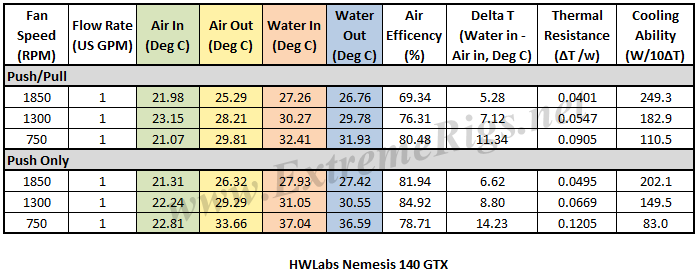 Note: All test were conducted with the coolant flow path set up to “Maximize” performance, or in Opti-Flow as we call it. For our Nemesis 360 GTX review we actually tested performance with coolant flow in both directions and for those interested the comparison results can be found here.
Note: All test were conducted with the coolant flow path set up to “Maximize” performance, or in Opti-Flow as we call it. For our Nemesis 360 GTX review we actually tested performance with coolant flow in both directions and for those interested the comparison results can be found here.
The performance metric of critical importance is the delta between the warm coolant temperature in and the cold ambient air temperature going into the radiator. Given that the system is well insulated and in equilibrium and we know the heat input to the system then we can also calculate a very important number. That number is the amount of power required to raise the coolant temperature by set amount. That amount is typically 1C or 10C. The latter is a more useful reference point.
Let’s take a look at the Delta T results from the tests. Note that the extrapolation of the curve is much more sensitive to error than in the tested range.
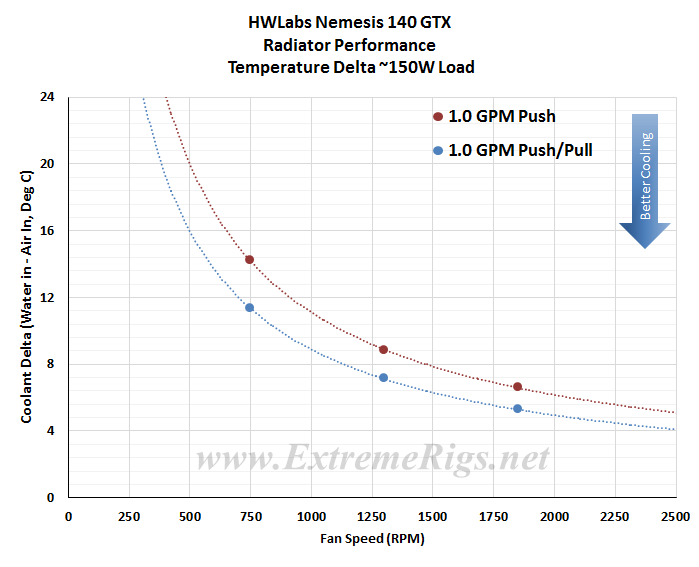 I was not too concerned about the actual delta numbers but instead the trend pattern. As we should expect, the deltas come down significantly as the fan speed is increased.
I was not too concerned about the actual delta numbers but instead the trend pattern. As we should expect, the deltas come down significantly as the fan speed is increased.
Delta T results (as above) are not always helpful when thinking about how many radiators you would need to cool your system. Instead it’s more useful to know the metric of W/delta C. This metric is plotted below. It tells us how many watts are dissipated by the radiator when the coolant rises 10C above ambient temperatures. (W/10 Delta T):
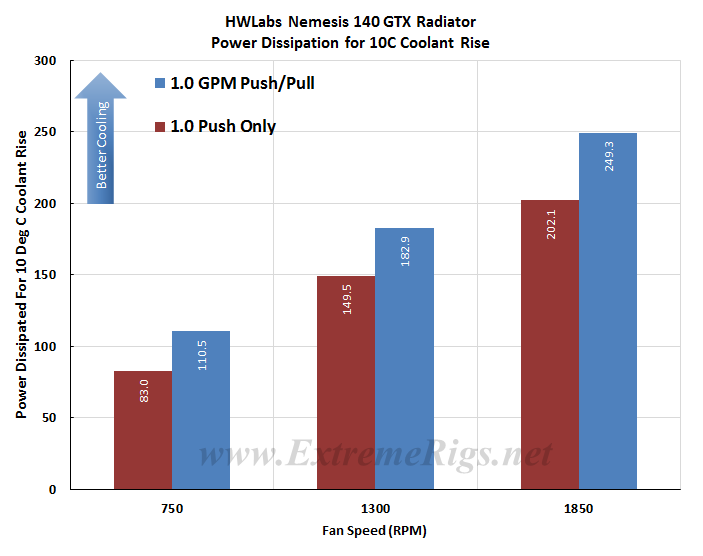 Here we can see good performance gains achieved by the medium density ~42mm thick core when the second fan is added.
Here we can see good performance gains achieved by the medium density ~42mm thick core when the second fan is added.
This same data can now be plotted on a chart so that an end user can interpolate their own fan speed. Note again that the extrapolation of the curve is much more sensitive to error than in the tested range.
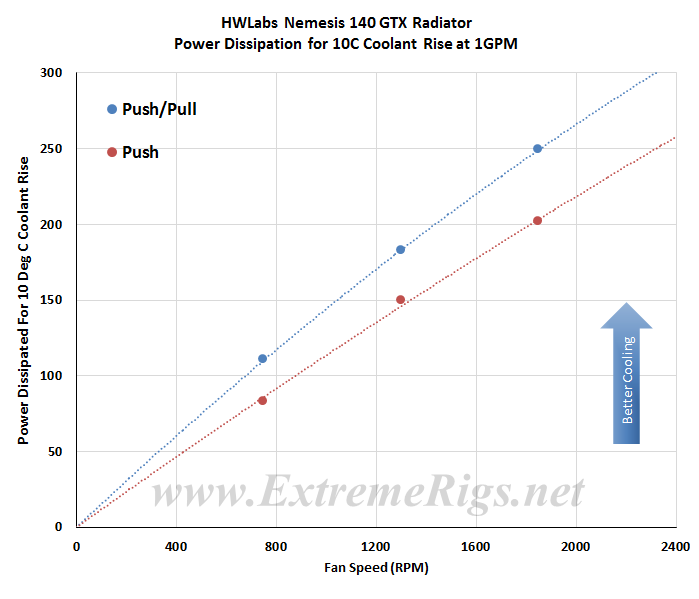 Having an average difference of 21% (largest of the test group) between Push Only and Push/Pull indicates that the Push/Pull results were very good indeed, or maybe that Push Only was very weak
Having an average difference of 21% (largest of the test group) between Push Only and Push/Pull indicates that the Push/Pull results were very good indeed, or maybe that Push Only was very weak
Let’s find out as we analyze that data some more…







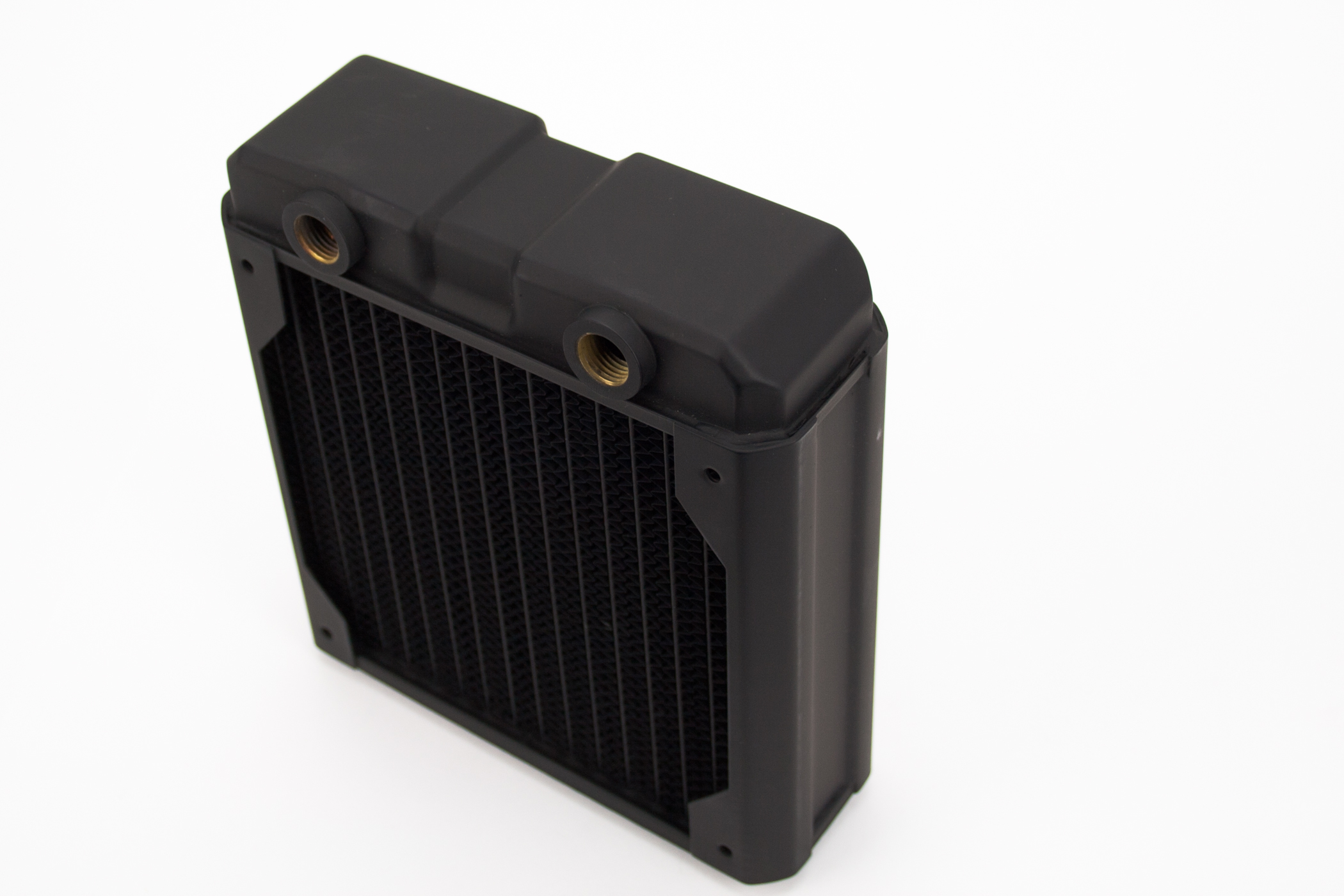



I really wish the 500rpm fan speed was tested with radiators on this site for lower noise builds. I’m trying to decide between a HWlabs GTX 140 and EK CE 140, and this extra data could push me off the fence either way.
In curious as to whether the GTXs performance would fall behind the CE in push pull at these fan speeds, since in the single fan configuration is is at the bottom of the 750rpm range.
The extrapolated plot makes it seems like the GTX would still beat the CE in push/pull: https://www.xtremerigs.net/wp-content/uploads/2015/11/140-W10DTPPvs.png
Sadly we can’t test every data point, to get this quality of data takes about a month per radiator so adding more data points just kills us!
Comments are closed.